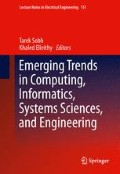Abstract
Development and evaluation issues of a computer game, named “PwN”, are presented in this study. PwN application aims to enhance students’ mathematical thinking, as well as to examine their problem solving strategies when confronted with simple mathematical tasks such as addition and multiplication. The application operates with random numbers that fall in a “box”. Individual scores are calculated when the appropriate computation is achieved. PwN development was based on the linear model using prototypes with continuous formative evaluation. Summative evaluation results indicate that the application improved the children’s skills both in addition and multiplication tasks.
Access this chapter
Tax calculation will be finalised at checkout
Purchases are for personal use only
References
Papastergiou M (2009) Digital game-based learning in high school computer science education: impact on educational effectiveness and student motivation. Comput Educ 52:1–12
Farrell G (2003) An overview of developments and trends in the application of information and communication technologies in education, UNESCO meta-survey on the use of technologies in education
McFarlane A, Sparrowhawk A, Heald Y (2002) Report on the educational use of games: An exploration by TEEM of the contribution which games can make to the education process. Available at: http://www.teem.org.uk/publications/teem_gamesined_full.pdf, Accessed 2 Sep 2010
Padilla Zea N, Rodríguez-Díaz FJ, Cabrera MJ, Morales J (2010) Using the ACOLEP-MD architecture: application to edutainment. Procedia Soc Behav Sci 2:2197–2201
Prensky M (2001) Digital game-based learning. McGraw-Hill, New York
Sandford R, Ulicsak M, Facer K, Rudd T (2010) Teaching with games: Using commercial off-the-shelf computer games in formal education, EA Futurelab. Available at: http://www.futurelab.org.uk/projects/teaching_with_games/research/final_report. Accessed 1 Sep 2010
Downes T (1999) Playing with computing technologies in the home. Educ Inf Technol 4(1):65–79
Oblinger D (2004) The next generation of educational engagement. J Interact Media Educ 8:1–18
Prensky M (2003) Digital game-based learning. ACM Comput Entertain 1(1):1–4
Papastergiou M, Solomonidou C (2005) Gender and information and communications technology: Greek high school students’ favourite internet activities. Comput Educ 44(4):377–393
Johnson J (2000) Teaching and learning mathematics: Using research to shift from the “yesterday” mind to the “tomorrow” mind, Technial Report, State Superintendent of Public Instruction, Washington, Available at: http://www.k12.wa.us/research/pubdocs/pdf/mathbook.pdf, Accessed 1 Sep 2010
Patton JR, Cronin ME, Bassett DS, Koppel AE (1997) A life skills approach to mathematics instruction: Preparing students with learning disabilities for the real-life math demands of adulthood. J Learn Disabil 30:178–187
Steel S, Funnell E (2001) Learning multiplication facts: A study of children taught by discovery methods in England. J Exp Child Psychol 79(1):37–55
Reis MJCS, Santos GMMC, Ferreira PJSG (2008) Promoting the educative use of the internet in the Portuguese primary schools: a case study. Aslib Proceedings 60(2): 111–129
Bragg LA (2003) Children’s perspectives on mathematics and game playing. In: Bragg L, Campbell C, Herbert G, Mousley J (eds) Mathematics education research: innovation, networking, opportunity, Proceedings of the 26th annual conference of the mathematics education research group of Australasia, Geelong, Sydney: MERGA, Vol 1, pp 160–167
Owens K (2005) Substantive communication of space mathematics in upper primary school. In: Chick HL, Vincent JL (eds) Proceedings of the 29th annual conference of the international group for the psychology of mathematics education, vol 4. Melbourne, PME, pp 33–40
Pfleeger SL (2010) Software engineering: theory and practice. Prentice-Hall, New Jersey
Panagiotakopoulos C, Kameas A (2007) Creation of a teaching timetable using random variables—the STB application. In: Iskander M (ed) Innovations in E-learning, Instruction Technology, Assessment and Engineering Education, pp 445–449
Panagiotakopoulos C (2008) Building teaching timetables using random variables: algorithms and techniques. In: Elleithy K (ed) Innovations and advanced techniques in systems, computing sciences and software engineering, pp 131–136
Microsoft Inc. (2010) How visual basic generates pseudo-random numbers for the RND function. Available at: http://support.microsoft.com/kb/q231847/. Accessed 28 Aug 2010
Stephens R (2005) Visual basic 2005 programming reference, Wiley Publishing, Indiana
Sommerville I (2004) Software engineering, 7th edn., Reading: Addison-Wesley, Boston
Author information
Authors and Affiliations
Corresponding author
Editor information
Editors and Affiliations
Rights and permissions
Copyright information
© 2013 Springer Science+Business Media New York
About this paper
Cite this paper
Panagiotakopoulos, C.T., Sarris, M.E., Koleza, E.G. (2013). Playing with Numbers: Development Issues and Evaluation Results of a Computer Game for Primary School Students. In: Sobh, T., Elleithy, K. (eds) Emerging Trends in Computing, Informatics, Systems Sciences, and Engineering. Lecture Notes in Electrical Engineering, vol 151. Springer, New York, NY. https://doi.org/10.1007/978-1-4614-3558-7_22
Download citation
DOI: https://doi.org/10.1007/978-1-4614-3558-7_22
Published:
Publisher Name: Springer, New York, NY
Print ISBN: 978-1-4614-3557-0
Online ISBN: 978-1-4614-3558-7
eBook Packages: EngineeringEngineering (R0)

